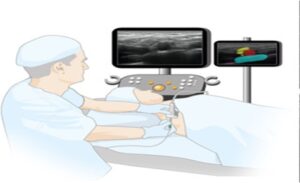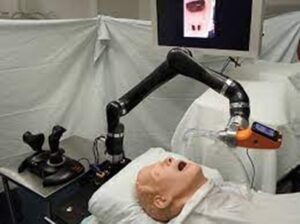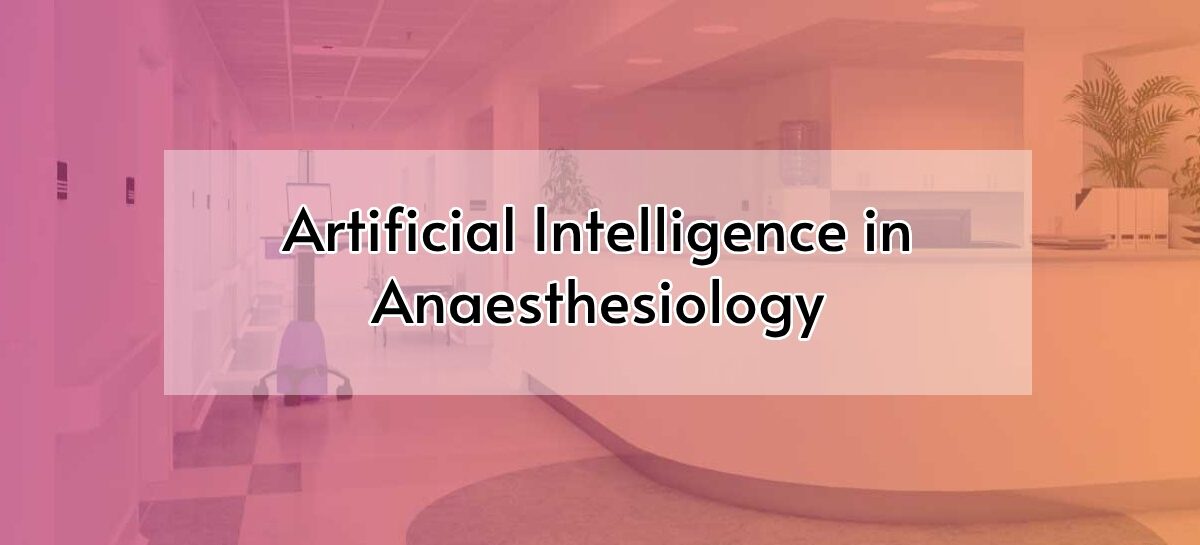INTRODUCTION
In the field of anaesthesia, Artificial Intelligence has become a game changing technology. It has the potential to impact the practice of anaesthesiology in various aspects include preoperative risk stratification, perioperative support, post operative monitoring, pain management, critical care observation and wireless intelligence tracking in ward. This article explores the current uses and prospective application of AI in anaesthesia.
WHAT IS ARTIFICIAL INTELLIGENCE?
It is the development of computer systems that are capable of performing tasks that normally require human intelligence, such as decision making, object detection, solving complex problems. In other words, it is the capability of computers to respond in a manner resembling human intelligence.
Aim of AI includes increased accuracy, decision making, solving complex problem and perform high level computations.
Stages of AI include.
- ARTIFICIAL NARROW INTELLIGENCE [ weak AI] Narrow defined role of task [ voice assistant, image recommendation]
- ARTIFICIAL GENERAL INTELLIGENCE [ strong AI]
- ARTIFICIAL SUPER INTELLIGENCE [ super strong AI]
TYPES OF AI
- Reactive machines AI – Works on preset data
- Limited AI – Works on past data
- Theory of mind AI- works on emotional intelligence.
- Self-awareness AI – Machines that have human level consciousness.
AI have different methods include.
MACHINE LEARNING – process by which the computer analysis the collected data ,which develops model to predict outcomes without explicit programming.
DEEP LEARNING – utilizes a neural network for processing the data.
APPLICATIONS IN ANESTHESIA
SIX THEMES OF APPLICATION INCLUDE
- DEPTH OF ANESTHESIA MONITORING
- CONTROL OF ANESTHESIA DELIVERY
- EVENT AND RISK PREDICTION
- ULTRASOUND GUIDANCE
- PAIN MANAGEMENT
- OPERATING ROOM LOGISTICS
- PRE-ANESTHETIC CARE
- Perioperative risk stratification [ ASA grading]
- Prediction of the difficult airway by using facial pictures. [ CORMACK LEHANE GRADING]
- Checking the completeness of the pre -operative check list.
- Suggesting the appropriate antibiotic by clinical decision support system. [CDSS]
- TELE-PAC- pre anesthetic assessment through telemedicine
- Patient education
- INTRAOPERATIVE
- AI ENHANCED USG –
- Enhanced needle tip visualization /epidural space identification
- Scan-Nav highlights and colours key anatomical structures.

- ROBOTIC INTUBATION
- Remote Robot assisted intubation system
- Automated intubation robotic system
- DaVinci / Kepler intubation system has a joystick – controlled robotic arm guided intubation.
- AI ENHANCED USG –

-
- DRUG ADMINISTRATION
- Open Loop Anesthesia Delivery System – TARGET CONTROLLED INFUSION [TCI]
- Diprifusor – TCI pump based on pharmacological model.
- Closed loop anesthesia delivery system [CLADS]
– Single input single output system [SISO]
– Multiple input and multiple output system [MIMO]
-
-
- DEPTH OF ANESTHESIA
- Focus based on BIS accuracy [84.2%]
EEG accuracy[88.4%]
MAP specificity[64%]- Helps in reducing the risk of intraoperative awareness, improving outcomes, and reducing morbidity.
- McSleepy – simultaneously balances hypnosis, analgesia, and neuromuscular blockade.
- HAEMODYNAMIC MANAGEMENT and MONITORING
- Fluid administration
- GOAL DIRECTED FLUID THERAPY MODELS -AI algorithm delivering fluid bolus based on urine output, BP, SVV, MAP.
- MODELS FOR VASOPRESSIN TITRATION
- RISK / EVENT PREDICTION
- Computer vision system can analyse video feeds from surgical cameras to detect changes in patient physiology [HR/BP]

- POST OPERATIVE
- To assess severity of pain from the facial expression of the patients
- Wireless intelligent patient-controlled analgesia [Wi-PCA]
AI Assisted PCA / AI Controlled PCA - Achieve better pain relief and patient satisfaction than traditional “on demand” parenteral analgesia.
- Magellan system -nerve blocks using USG guided robotic needle placement.
- LIFE SIGNS INTELLIGENT MONITORING SYSTEM
- Can monitor multiple parameters of several patients continuously. End to end continuous wireless digital monitoring system with a robust alert mechanism accessible anywhere, anytime.
- Helps in view patient data from anywhere, avoidance of code Blues, Ambulance monitoring in ward and post discharge monitoring.
-

-
-
- OPERATIVE ROOM LOGISTICS
- Scheduling of operative room time, tracking movements and actions of anesthesiologist, staffing and so on.
- OPERATIVE ROOM LOGISTICS
-
-



 Dr Velmurugan Deisingh
Dr Velmurugan Deisingh Dr S. Dhiveya
Dr S. Dhiveya